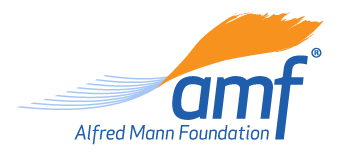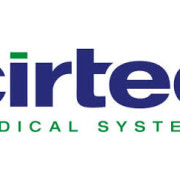A personal tragedy prompted John Petrovich to leave big law for the biotech sector. Now general counsel of the nonprofit Alfred Mann Foundation, Petrovich says he couldn’t be happier with his choice.
Before a career detour into biotechnology, John Petrovich hadn’t taken so much as a high school chemistry class.
Petrovich started out working at big firms, including Morrison & Foerster, doing legal work in the communications and media sector. But his late wife’s cancer prompted him to seek more flexible hours.
He started as a biotech lawyer, then his finance degree eased him into the CEO seat at two start-ups, Insert Therapeutics and Calando Pharmaceuticals, companies that parlayed cutting-edge cancer research developed at Caltech into human clinical trials. The start-ups didn’t survive the recession, but Petrovich was eager to stay in the biotech industry.
In March, he was hired as general counsel of the Alfred Mann Foundation. The nonprofit medical-research foundation based in the hills of Santa Clarita is part of a larger family of companies created by billionaire Alfred Mann, who made his fortune in the aerospace and medical-technology industries. The foundation has long had an interest in translating university research into market-ready medical devices, from the modern-day cardiac pacemaker in the late ’60s to pending $100 million development of wireless prosthetics using military technologies.
Today the foundation claims more than 160 patents. Managing those patents – and ensuing litigation – has kept Petrovich busy for his first few months. Daily Journal staff writer Emma Gallegos recently spoke with Petrovich. Here’s an edited transcript of what he had to say:
DJ: What legal work do you spend the most time on?
Petrovich: I spend a lot of time here in meetings. I do that both to educate myself on technologies and because you never know when something is going to come up in a meeting that has legal implications. There’s intellectual property coming up everywhere around here. When someone comes up with an idea, you want to seize on it and get that documentation going.
I also manage litigation. We have patent-infringement litigation with our Cochlear implants. I do licensing work right now, and I’m trying to finalize a deal with a German institute on a very small silicon-based pump. New things are coming up all the time, so I tend to get involved in both the business evaluation and the licensing. The main thing I was brought in here to do was to actually find ways to spur innovation. The lifeblood of this place is intellectual property and, for a lot of reasons, some of which were related to the environment of how invention disclosures were handled, it had really fallen off. People weren’t writing down ideas and turning them in so we could file patents on them. I was tasked with trying to figure out how to spur this and get people engaged in the process again.
DJ: What kind of issues do you bring in outside counsel for?
Petrovich: Patent prosecution, first and foremost. And that’s mainly a people-power issue. We used to have our own in-house patent lawyers. We don’t any longer. That’s a specialized body of knowledge. We’re a nonprofit, so we also have outside counsel that we will consult regularly on things like governance issues, conflict of interest and other things having to do with our board of directors and management, and just managing the public trust that we have. We don’t normally have a lot of litigation going on, but we do have litigation pending against an Australian company, Cochlear Implant, that’s been going on for a couple of years now. Occasionally, when we do some large out-licensing transactions, we could get some outside counsel involved, but that’s another area that I have a fair amount of experience in, and I think we might not use outside counsel as much in the traditional licensing and corporate areas.
DJ: What kind of process goes into choosing outside counsel?
Petrovich: Fees. (Laughs.) Seriously, we find that all the major firms have patent departments, but they also have billable rates that go from $500 to $900 an hour. On the other end of the spectrum, there are some very talented lawyers, a lot of whom used to work at big firms like that, who have founded their own firms, and will charge you $350 an hour and fixed-fee pricing on filing patents applications.
A lot of the issues I care about the most are related to communication. The reason all of us carry around iPhones and Blackberries is to stay in touch, so I hate sending an email to someone, asking a question and not hearing from them for three or four days. I don’t need an answer right away, but maybe just a quick email saying, “Can’t get to this now. Can I talk to you Wednesday?” That kind of response I would expect within the day, if not within an hour or two.
DJ: What firms or attorneys do you rely on?
Petrovich: Some have been ones that we’ve used for some time here. Douglas Mancino at McDermott, Will & Emery is the attorney we use for governance issues. Kaye Scholer handles our patent litigation – Dan Grunfeld here and a guy named Scott Lindvall in their New York office. For patent firms, the ones I’ve used the most since coming here are Steinfl & Bruno, and also Gavrilovich, Dodd & Lindsey. These are people that are also used by others in the company and family. Gary Ross of Ross & Morrison does human-resources law work for us when we need support. We also have a lot of issues going on with the Federal Communications Commission, so we have a lot of issues in Washington D.C., and we use a very good lawyer there named Cheryl Tritt, who used to be a former Morrison & Foerster colleague of mine, but now she is with Wilkinson Barker Knauer.
DJ: How has the company been impacted by the lack of money for investment in technology development?
Petrovich: We haven’t been as directly affected, because we have an endowment, and we do survive off of that, so it’s not as if we have to continually go out and raise new money. The only way the capital markets and the whole financial break really affected us was that it caused a dip and ultimately a rebound in our endowment, because it’s all fully invested. It’s difficult to quantify this, but I guess it could impact our ability to out-license our technologies.
DJ: How did you get into this field?
Petrovich: The story is not altogether a happy story. My first wife passed away six years ago from breast cancer. She was first diagnosed with breast cancer in 1995, and had surgery. She had chemo and various clinical trials, and she was cancer-free for 4½ years. I had just left Brown Raysman to join a start-up company in the communications area, and her cancer came back. So I said to the company, “I need out. I want to work less time. I will consult with you for half time, but I’m going to work out of my house.”
Then I realized that it wasn’t a part of the plan to be a solo practitioner, but there I was being a solo practitioner and working out of the house. So I sent out a bunch of emails to former partners and former colleagues and clients. One of them was my former partner, Mike Roster at MoFo. He had just become involved in a start-up called Insert Therapeutics. He said, “These guys are a bunch of scientists who have some very cool drug-delivery technology, and they need someone from a business and legal perspective to help them out.” In 2000, I got involved with Insert Therapeutics, and then I went on to become CEO of that company and another spin-off, Calando Pharmaceuticals. They were doing cutting-edge RNA interference cancer drugs. It was very interesting stuff, and it was a fun way to spend the years. I would tell my friends that during the decade of the aughts, I probably made a whole lot less money than a lot of my colleagues at law firms, but I had way more fun. And it was very meaningful work to me, just given that whole personal situation with my wife. While she was going through the last parts of her battle with cancer, we were here developing these cancer drugs.


